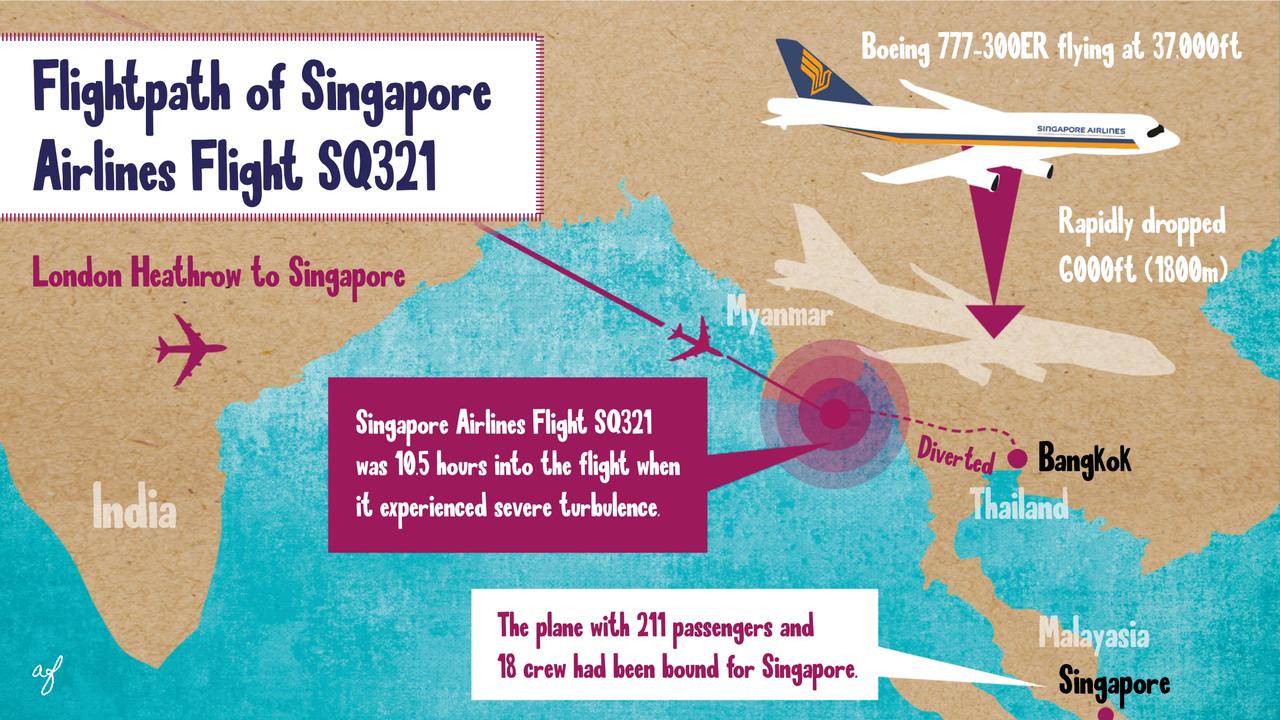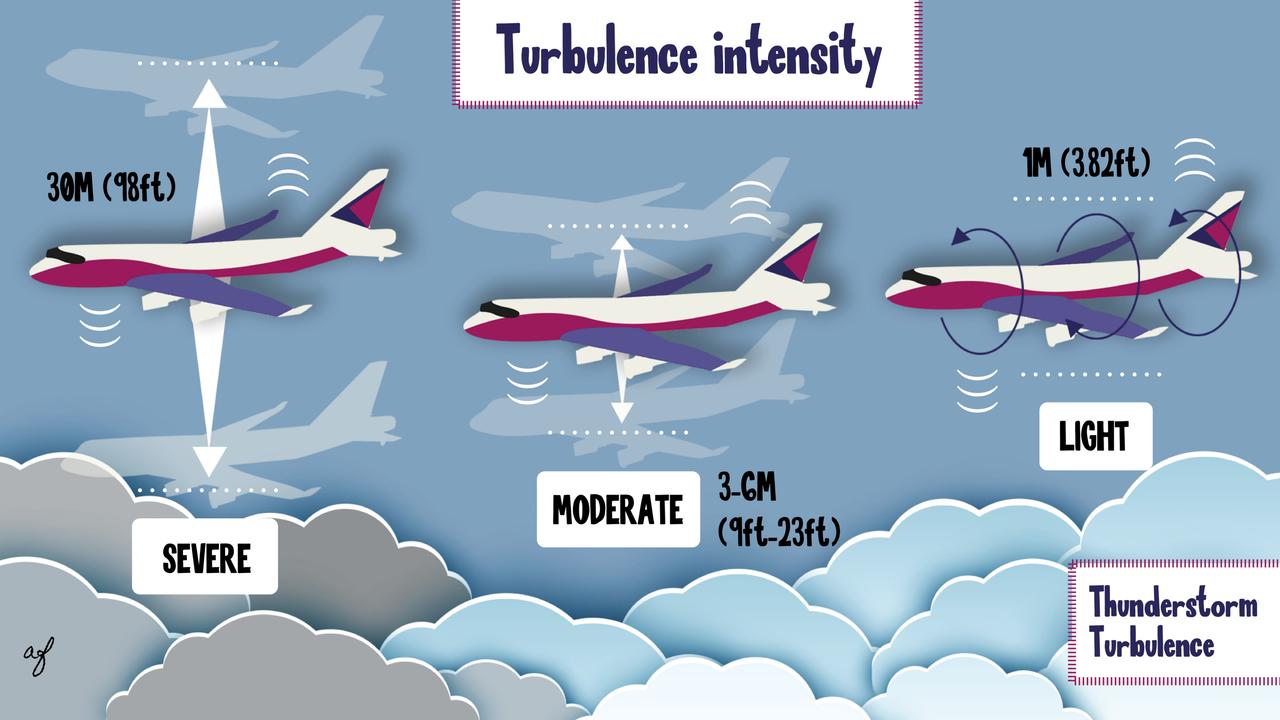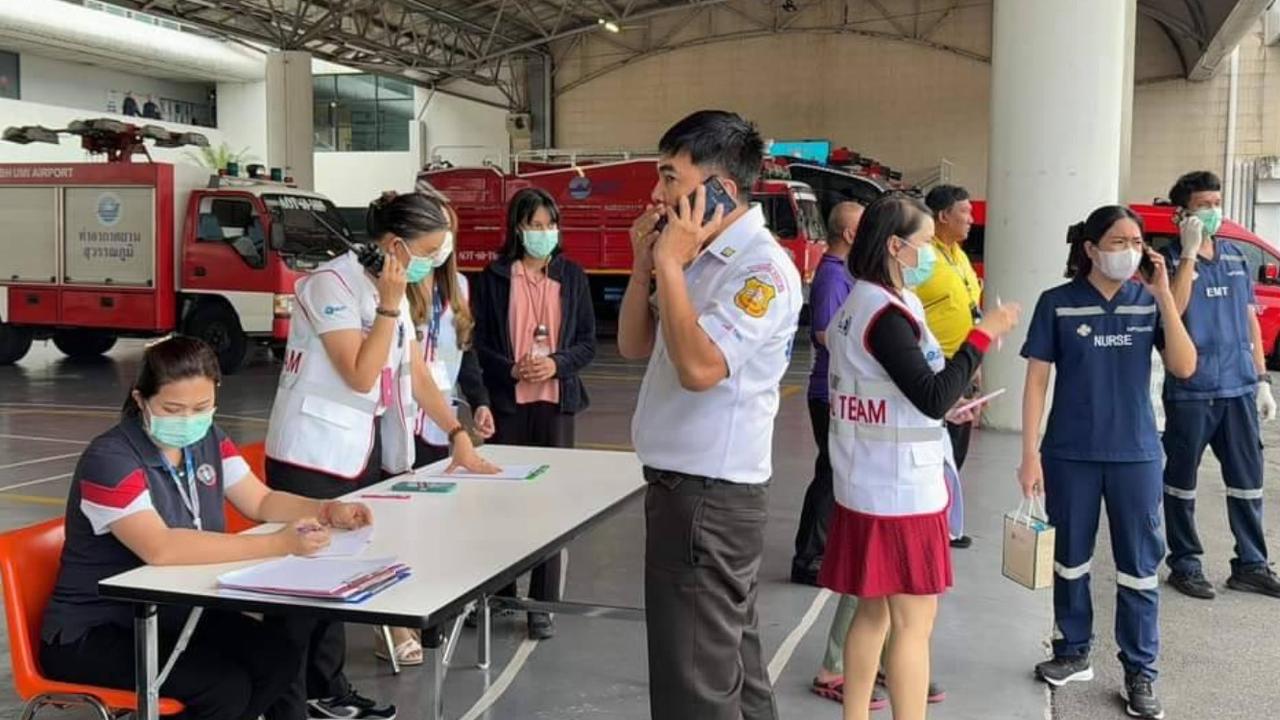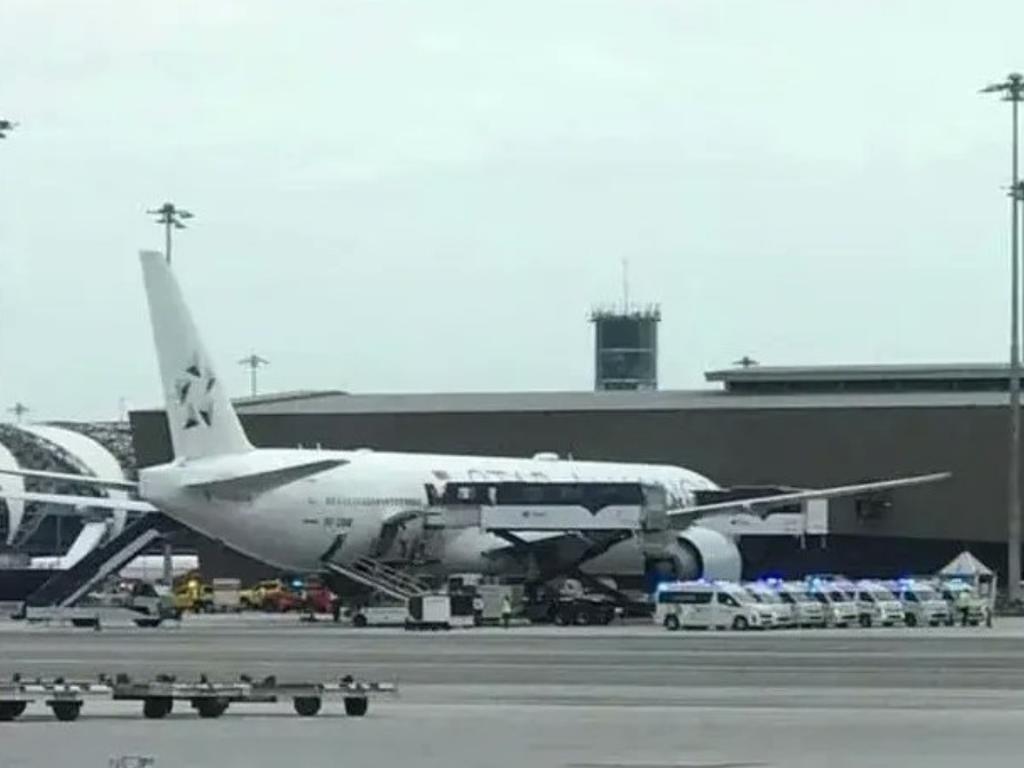Flight SQ321 is thought to have hit severe turbulence – but what is it?
Passengers aboard Singapore Airlines flight SQ321 included 56 Australians and first reports suggest a natural phenomenon caused their ordeal – here’s what we can learn from it

READING LEVEL: ORANGE
Australians woke up on Wednesday morning to the news that 56 Australians – more than any other nationality on board – were among 211 passengers on a Singapore Airlines flight from London to Singapore when it hit severe turbulence.
The Boeing 777-300ER aircraft was forced to divert* and landed safely in Bangkok*.
Sadly one older passenger, a 73-year-old British man, died of a suspected heart attack during the incident and 30 others who were injured are now being treated in hospital in Bangkok.
In a statement on Wednesday morning, DFAT said consular* officials from the Australian embassy* in Bangkok were providing assistance to the eight Australians who were injured.
Emergency incidents like this one are always a shock and it is only natural to feel a bit worried or scared when bad things happen. It is usually very helpful to understand more about the facts of a situation. This flight, for example, apparently encountered severe turbulence, so let’s learn more about that.

WHAT IS TURBULENCE?
Turbulence, or pockets of disturbed air, can have many causes, most obviously the unstable weather patterns that trigger storms, according to an industry briefing by plane maker Airbus.
The resulting water particles can be detected by weather radar.
Singapore Airlines did not immediately say what type of turbulence was involved. Tracking service FlightRadar24 said there were storms – some severe – in the area at the time.
WHAT IS CLEAR AIR TURBULENCE?
Known by its abbreviation CAT, this is a sudden and severe swirl that causes violent buffeting* of a plane even where there are no clouds, according to America’s Federal Aviation Administration.
Such invisible pockets of air can appear without warning and are hard to predict. University of Reading meteorologist* Mark Prosser said Tuesday’s event most likely involved convective* or storm-related turbulence, but stressed it was too early to be certain.
An investigation has been launched and experts said that aircraft accidents typically involves a combination of factors.

HOW COMMON IS IT?
Turbulence-related incidents are common, according to a 2021 study by the US National Transportation Safety Board.
From 2009 through 2018, it found that turbulence accounted for more than a third of reported events and most resulted in one or more serious injuries, but no aircraft damage.
Yet fatal turbulence in air travel remains extremely rare.
“It is a very unusual and rare event,” said Paul Hayes, director of safety at UK-based aviation data group Cirium Ascend. “As far as I can tell it is over 25 years since a passenger was killed by commercial airliner turbulence.”
The last fatal turbulence-related accident on Cirium’s database involved a United Airlines Boeing 747 in 1997.

HOW DO PILOTS RESPOND?
Crews plan ahead by studying turbulence and other weather forecasts, which have improved over the years, loading extra fuel when needed and monitoring weather radar during flight.
But sometimes violent CAT leaves little time to react.
“If it’s unexpected then it’s a bit late,” said Royal Aeronautical Society retired pilot Hugh Dibley, an expert on aircraft upsets. “You hope to get warnings from other aircraft in the area and slow down to make sure the effects are minimised.”
WHICH PLANES ARE BEST FOR TURBULENCE?
In terms of their structure, all modern commercial jets are built to cope with forces many times those experienced in-flight, Mr Hayes said.
But according to Swedish turbulence-forecasting website Turbli, the feeling experienced by passengers varies from plane to plane and seat to seat.
Long planes can feel most turbulent at the back and the ideal spot is around the centre of gravity, which is typically just ahead of the wings.
Boeing’s hi-tech 787-9, with a “Gust Alleviation System” from Honeywell, ranks first for handling turbulence, according to Turbli. Next is the Airbus A340-500/600, though the four-engined model is no longer widely used due to fuel costs.
The Boeing 777 family is widely seen as having a strong safety record – excluding two Malaysia Airlines tragedies, both in 2014. It is equipped with traditional weather radar but does not have the newer 787’s alleviation system.

WHAT ABOUT SEATBELTS?
US airline pilots and flight attendant unions told Reuters the incident highlighted the importance of following crew instructions and wearing a seatbelt whenever seated.
But they cautioned that leaving the seatbelt sign on all the time could mean passengers eventually start ignoring it.
Among the most exposed to injury are crew, who must tour the cabin to check seatbelts have been fastened when signs go on.

WHAT ABOUT NEW TECHNOLOGY?
NASA says it is developing an early-warning system that relies on ground-mounted infrasonic* microphones to detect clear-air turbulence hundreds of miles away.
Austria-based tech start-up Turbulence Solutions says it is developing technologies to eliminate up to 80 per cent of turbulence.
But industry experts caution any new aircraft systems must be proven to work to a high level of reliability and it takes years of rigorous testing before technology can be validated*. Airlines must usually agree to foot the bill for any upgrades.

IS CLIMATE CHANGE TO BLAME?
A spate* of turbulence reports has started a debate over whether climate change may be causing more turbulence.
A report from the University of Reading last year suggested turbulence could worsen with climate change.
“Our latest future projections indicate a doubling or trebling of severe turbulence in the jet streams* in the coming decades, if the climate continues to change as we expect,” said Professor Paul Williams, one of the authors.
However, he told Fox News that while there seemed to be a strong correlation*, more research was needed.
“It’s too early to definitively blame climate change for the recent apparent increases in turbulence,” Professor Williams said. “Increased media coverage, aided by in-flight video footage from passengers’ mobile phones, may well be a factor.”
Additional reporting by Kids News
POLL
GLOSSARY
- divert: reroute, redirect, change course
- Bangkok: capital of Thailand
- embassy: official building for a group of government officials, headed by an ambassador, who represent their government in a foreign country
- buffeting: hitting something repeatedly and with great force
- meteorologist: scientist who studies the atmosphere, weather and climate
- convective storms: severe local storms with thunder, lightning, heavy rain, hail, strong winds and sudden temperature changes, most common during summer
- infrasonic: a type of sound with a frequency lower than humans can hear
- validated: accepted, approved, confirmed, endorsed
- spate: large number of usually unpleasant things happening in a short space of time
- jet streams: narrow bands of strong wind high in Earth’s atmosphere that generally blow from west to east all across the globe and impact the weather
- correlation: connection or relationship between two facts
EXTRA READING
Passenger takes world-first flying car flight
Doggie treats taking off on Virgin?
Strange new idea to cool Earth
QUICK QUIZ
- Which airline was involved, where did the plane depart from and what was its destination?
- What does CAT stand for and what is it?
- Which plane does Turbli rank as first for handling turbulence and why?
- What is NASA developing to help with turbulence?
- What debate has started after a spate of turbulence?
LISTEN TO THIS STORY
CLASSROOM ACTIVITIES
1. What would you say?
How would you convince someone younger than you, who has heard this news, not to be scared of flying? Write down what you would say, or do.
Time: allow at least 15 minutes to complete this activity
Curriculum Links: English, Science, Personal and Social Capability
2. Extension
Use information in the story, and your research skills, to find out about the different causes of turbulence. Use this information to create diagrams that could be included with this Kids News story to help other kids understand the reasons why turbulence happens.
Time: allow at least 40 minutes to complete this activity
Curriculum Links: English, Science, Geography
VCOP ACTIVITY
Imaginative dialogue
Imagine you were there during the turbulence event.
Create a conversation between two passengers on the plane – you may need or want to include yourself as one of the characters. Don’t forget to try to use facts and details from the article to help make your dialogue as realistic as possible.
Go through your writing and highlight any punctuation you have used in green. Make sure you carefully check the punctuation used for the dialogue and ensure you have opened and closed the speaking in the correct places.

